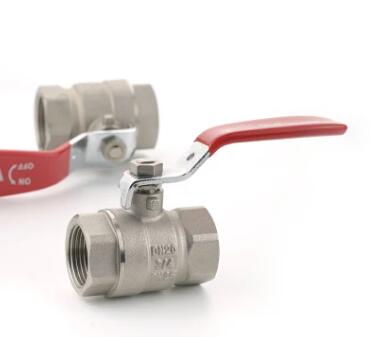Navigating the Flow: Understanding the Difference Between Floating Ball and Trunnion-Mounted Ball Valves
2023-12-02
Introduction:
In the intricate world of fluid control systems, ball valves serve as indispensable components, regulating the flow of liquids or gases. The distinction between a floating ball valve and a trunnion-mounted ball valve lies in the mechanics of how the ball is supported within the valve structure. Join us as we explore the nuances of these two ball valve constructions, shedding light on their differences and the specific applications that call for their unique designs.
Floating Ball Valve: The Elegance of Simplicity
The floating ball valve is characterized by its simplicity in design and construction. In this configuration, the ball is not fixed to the valve body but is free to move or "float" within the valve cavity. The sealing mechanism relies on the pressure of the fluid, which forces the ball against the downstream seat to create a tight seal.
Key Features:
1. Simple Design: Floating ball valves are known for their straightforward design, consisting of a ball that is free to move within the valve cavity.
2. Bidirectional Sealing: The floating ball design allows for bidirectional sealing, making these valves suitable for applications where the flow direction may change.
3. Low Torque Requirement: Due to the reliance on fluid pressure for sealing, floating ball valves typically have lower torque requirements during operation.
4. Cost-Effective: The simplicity of construction often makes floating ball valves more cost-effective compared to trunnion-mounted ball valves.
Applications:
Floating ball valves are commonly used in applications with moderate pressure and temperature conditions, such as general-purpose industrial processes, water supply systems, and other non-critical applications.
Trunnion-Mounted Ball Valve: Robust Performance Under Pressure
Trunnion-mounted ball valves, in contrast, feature a more complex design that involves the use of trunnions or stems that support and anchor the ball within the valve body. The ball in a trunnion-mounted valve is fixed and does not float, providing additional stability and control over the sealing mechanism.
Key Features:
1. Stable Construction: The trunnion-mounted design provides stability to the ball, ensuring precise control over its position within the valve cavity.
2. Bidirectional and Unidirectional Sealing Options: Trunnion-mounted ball valves can be designed for both bidirectional and unidirectional sealing, offering flexibility for various applications.
3. High Pressure and Temperature Capabilities: The robust construction of trunnion-mounted ball valves makes them suitable for high-pressure and high-temperature applications, providing reliable performance under demanding conditions.
4. Prevents Ball Distortion: The trunnion-mounted design prevents distortion or deformation of the ball under high pressure, contributing to long-term reliability.
Applications:
Trunnion-mounted ball valves find application in industries where high pressure, high temperature, and critical performance requirements are prevalent. This includes oil and gas pipelines, petrochemical plants, power generation facilities, and other heavy-duty industrial processes.
Conclusion: Choosing the Right Valve for the Task
The choice between a floating ball valve and a trunnion-mounted ball valve ultimately depends on the specific demands of the application. While floating ball valves offer simplicity and cost-effectiveness for less demanding situations, trunnion-mounted ball valves provide enhanced stability and performance under high-pressure and high-temperature conditions. Engineers and industry professionals carefully consider factors such as pressure ratings, temperature requirements, bidirectional or unidirectional sealing needs, and cost considerations to determine which valve design is best suited for the task at hand.



